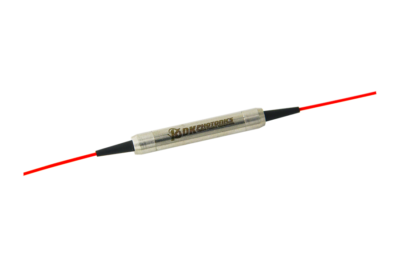The trend of FTTX technologies is increasing rapidly, spurring the sharp demand for fiber optics components, especially optical passive components. This dramatic transformation is occurring because of the rising demand for internet-based communications and services among businesses and consumers.
The transformation continues to accelerate at a quick pace, especially after the Covid-19 pandemic. As a result, more network operators are working in increasing their capacity to support the increasing demand for remote work, cloud-based services, video streaming, IoT, and 5G wireless technology.
How Is WDM Making FTTX Possible?
Wavelength Division Multiplexing (WDM) is a technique that makes it possible for network operators to combine (or multiplex) several optical carrier signals onto one single optical fiber by utilizing different wavelengths of laser light. Each wavelength is responsible for transferring an individual signal without interfering with other wavelengths. WDM technology also allows bidirectional communications over one strand of fiber and thereby multiplying the capacity of optical fibers.
Therefore, WDM technology has quickly become a preferred option in the telecommunications industry as it helps the network to increase the bit rate (data transfer rate) and increase the bandwidth without adding additional fiber.
Since the 1990s when Tier-1 cable operators started using WDM, WDM solutions have improved and become more compact, affordable, easier to install, and more flexible in terms of capabilities.
WDM can be categorized into two types:
- CWDM (Coarse WDM)
- DWDM (Dense WDM)
How Are CWDM and DWDM Used?
While CWDM supports multiplexing for 4, 8, 12, or 16 channels with each wavelength ranging from 1270 nm to 1610 nm and a 20nm channel spacing, DWDM can support up to 96 channels in the 1550 nm region (C-Band), with channel spacing of only 0.8nm.
CWDM technology is widely used because it allows for cheap lasers and is ideal for short-range communications as it is compact and cost-effective. On the other hand, DWDM is ideal for long-haul transmission as it allows a large amount of data to travel along a single network link.
Due to narrow channel spacing, DWDM requires temperature-controlled lasers and also allows the use of EDFAs to amplify the entire 1550nm of the C-Band spectrum.
How Is WDM Technology Evolving?
The industry of fiber optics is undergoing dramatic transformation due to ongoing advancements and improvements to meet the challenging demands of the future. The two major trends seen in this industry are the expansion of optical fiber usage to keep up the bandwidth capacity expansion and the need for a reduced footprint for both inside and outside plants.
The requirement for smaller frames, panels, closures, and terminals is driving the development of more compact WDM components and devices. Thus, while 3-port thin-film fiber (TFF) WDM is the preferred DWDM technology, newer designs that include free-space compact dense WDM (CDWDM) devices are gaining popularity as well.
At DK Photonics, we offer fused WDM components and various optical components for FTTX applications. For any queries related to WDM or FTTX-related optical passive components, please connect with us.


Leave A Comment